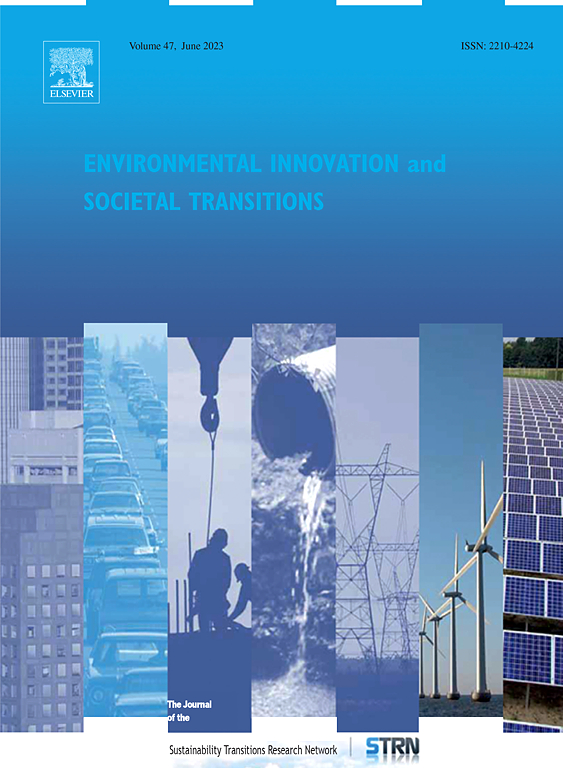Getting it right: regulating mine rehabilitation and closure in Australia for the green energy transition and critical minerals boom
IF 6.1
2区 经济学
Q1 ENVIRONMENTAL SCIENCES
Environmental Innovation and Societal Transitions
Pub Date : 2025-05-21
DOI:10.1016/j.eist.2025.101004
引用次数: 0
Abstract
A mining boom to extract critical minerals for the global green energy transition is gathering momentum. However, a boom-time mentality may overlook key aspects of up-front design and planning for mine rehabilitation to ensure sustainable operation and closure with beneficial post-mining use. Australia has significant deposits of many critical minerals and, as a prominent mining country, exemplifies the challenge. With few mine closure success stories compared to negative mining legacies in Australia, the literature indicates that mine rehabilitation and closure (MR&C) regulation may be unfit for purpose. Our longitudinal methodology identifies when key mine rehabilitation and closure concepts emerged in regulation. Despite introducing financial mechanisms, rehabilitation standards and in some jurisdictions, mine closure requirements, regulation is fragmentated and at times contradictory, while ambivalence between government and self-regulation persists. Socio-economic aspects of mine rehabilitation and closure regulation remain neglected, though new institutions hold promise of greater attention to cumulative impacts and stakeholder participation as critical mineral extraction accelerates.
正确的做法:规范澳大利亚矿山的恢复和关闭,以实现绿色能源转型和关键的矿产繁荣
为全球绿色能源转型提取关键矿物的采矿业热潮正在积聚势头。然而,繁荣时期的心态可能会忽视矿山恢复的前期设计和规划的关键方面,以确保可持续的经营和关闭,并有利于采矿后的利用。澳大利亚拥有许多重要矿物的大量矿藏,作为一个突出的矿业国家,它是这一挑战的例证。与澳大利亚负面的采矿遗产相比,矿山关闭的成功案例很少,文献表明矿山恢复和关闭(MR&;C)法规可能不适合目的。我们的纵向方法确定了监管中出现关键矿山恢复和关闭概念的时间。尽管实行了财政机制、恢复标准和在某些司法管辖区实行了关闭矿山的规定,但管制是零碎的,有时是矛盾的,而政府和自我管制之间的矛盾仍然存在。矿山恢复和关闭规章的社会经济方面仍然被忽视,尽管随着关键矿物开采的加速,新的机构有望更加注意累积影响和利益攸关方的参与。
本文章由计算机程序翻译,如有差异,请以英文原文为准。
求助全文
约1分钟内获得全文
求助全文
来源期刊

Environmental Innovation and Societal Transitions
Energy-Renewable Energy, Sustainability and the Environment
CiteScore
13.60
自引率
19.40%
发文量
90
审稿时长
56 days
期刊介绍:
Environmental Innovation and Societal Transitions serves as a platform for reporting studies on innovations and socio-economic transitions aimed at fostering an environmentally sustainable economy, thereby addressing structural resource scarcity and environmental challenges, particularly those associated with fossil energy use and climate change. The journal focuses on various forms of innovation, including technological, organizational, economic, institutional, and political, as well as economy-wide and sectoral changes in areas such as energy, transport, agriculture, and water management. It endeavors to tackle complex questions concerning social, economic, behavioral-psychological, and political barriers and opportunities, along with their intricate interactions. With a multidisciplinary approach and methodological openness, the journal welcomes contributions from a wide array of disciplines within the social, environmental, and innovation sciences.
 求助内容:
求助内容: 应助结果提醒方式:
应助结果提醒方式:


